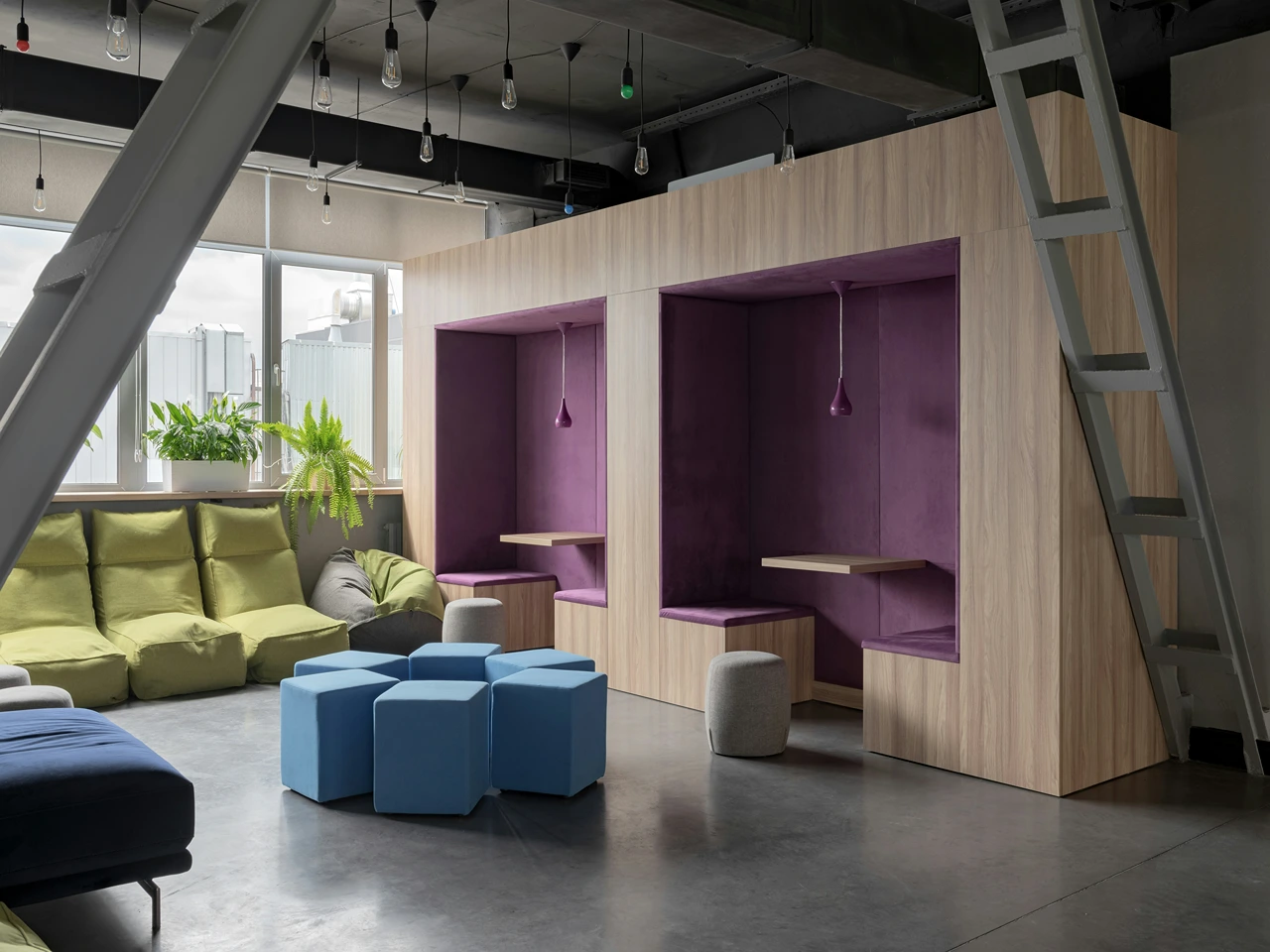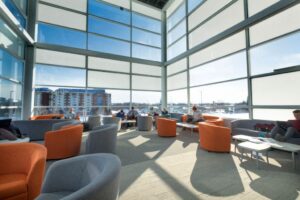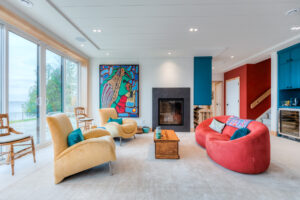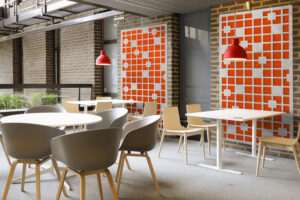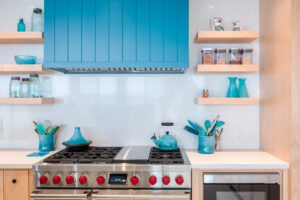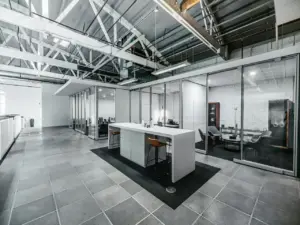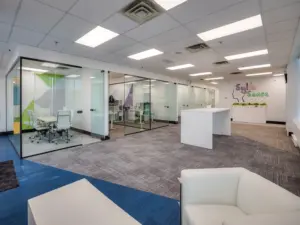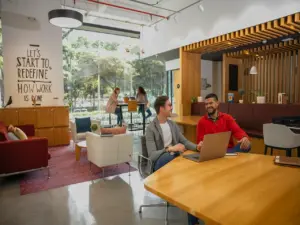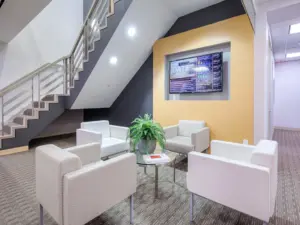The hospitality industry is all about creating incredible guest experiences. Over the years, it has mastered the art of making people feel welcomed, comfortable, and valued. But what if workplaces took a page from that book? Imagine an office that feels just as inviting as a high-end hotel lobby or a cozy café—somewhere employees actually want to be. By applying hospitality-inspired commercial interior design, companies can boost employee satisfaction, improve retention, and create a workplace that feels less like a job and more like a community.
Why Hospitality Design Makes a Difference in the Workplace
Offices are evolving. Gone are the days of dull cubicles and uninspiring break rooms. Employees expect more from their work environment, and businesses are starting to take notice. Just as hotels and restaurants put effort into crafting a memorable guest experience, companies should prioritize making the office an enjoyable and engaging place for their teams through thoughtful commercial interior design. Here are five hospitality design themes that can take your workplace to the next level.
First Impressions Matter: A Warm and Welcoming Reception with Commercial Interior Design
Think about walking into a luxury hotel—the stylish decor, warm lighting, and friendly greeting from the concierge. It instantly sets the tone for your stay. Now, compare that to many office receptions: plain walls, uncomfortable chairs, and a generic sign-in sheet. Not exactly inviting.
A hospitality-inspired reception area makes employees, clients, and visitors feel at home from the moment they step inside. Comfortable seating, thoughtfully chosen decor, and a friendly front desk experience can create a lasting first impression. Adding elements like office lounge furniture, soft background music, or greenery can make the space feel even more welcoming. Commercial interior design can help curate these spaces to feel both professional and inviting.
A Cozy, Comfortable Work Environment Through Commercial Interior Design
Traditional office interior designs tend to feel cold and impersonal. Rows of desks, harsh fluorescent lighting, and bland color schemes don’t exactly scream comfort. On the other hand, hospitality spaces are designed to make people feel at ease.
A well-designed workplace should incorporate warm lighting, natural materials, and soft textures to create a more inviting atmosphere. Think about cozy lounge areas with plush seating, breakout spaces with natural light, and even fireplaces or artwork that add character. Commercial interior design plays a crucial role in transforming these environments into spaces where employees feel comfortable and inspired. Employees are more likely to enjoy being in the office when it feels like a space they’d actually want to spend time in outside of work.
Personalization: Treat Employees Like Guests with Commercial Interior Design
Great hotels anticipate their guests’ needs—offering personalized touches like remembering a preferred room temperature or suggesting activities based on past stays. Workplaces can do the same by tailoring the office experience to their employees.
Instead of a one-size-fits-all approach, companies can provide flexible workspaces, customizable desks, and perks that reflect employees’ preferences. Whether it’s offering a variety of seating options, wellness perks, or curated snack selections, small personalized details can go a long way in making employees feel valued. Commercial interior design allows companies to create dynamic, flexible spaces that cater to different work styles and needs.
Prioritizing Health and Wellness with Commercial Interior Design
Hotels and resorts understand the importance of relaxation and well-being, offering everything from spas to fitness centers. Offices should take note—especially as employees return to in-person work with higher expectations for workplace wellness.
Simple changes, like incorporating biophilic design (plants, natural light, and outdoor spaces), ergonomic furniture, or wellness rooms for meditation and relaxation, can have a major impact. Offering fitness classes, standing desks, or even an office gym can further support employees’ physical and mental well-being. Commercial interior design can seamlessly integrate these wellness-focused features into the workplace, ensuring they are functional and aesthetically pleasing.
Creating Central Hubs for Connection and Community with Commercial Interior Design
Hotel lobbies, bars, and common areas are designed to encourage social interaction. Offices can take inspiration by creating central gathering spots where employees naturally come together.
Instead of isolating teams in separate corners of the office, consider incorporating open café-style break areas, cozy collaboration spaces, or large communal tables where people can chat, work, or unwind. Having designated spaces for casual conversations and impromptu meetings fosters a sense of belonging and strengthens company culture. Commercial interior design ensures these hubs are both practical and visually appealing, encouraging organic interaction among employees.
Key Takeaways:
- Hospitality-inspired commercial interior design creates a welcoming, engaging, and comfortable work environment.
- First impressions matter—reception areas should be warm and inviting to make employees and visitors feel at home.
- Cozy and thoughtfully designed workspaces can boost employee morale and productivity.
- Personalization makes employees feel valued and enhances workplace satisfaction.
- Health and wellness initiatives, such as biophilic design and ergonomic furniture, contribute to employee well-being.
- Central hubs for collaboration and social interaction foster a strong company culture.
Final Thoughts: Turning the Workplace into a Destination with Commercial Interior Design
At the end of the day, people want to work in spaces where they feel comfortable, appreciated, and inspired. By taking cues from hospitality design, companies can transform their offices into places that employees look forward to being in. A thoughtfully designed workplace isn’t just about aesthetics—it’s about creating an environment where people thrive.
Businesses that prioritize employee experience, just like hotels prioritize guest experience, will see higher engagement, better productivity, and stronger retention. Commercial interior design plays a key role in shaping these experiences, ensuring that the workplace is as inviting as it is functional. So why not make the office feel a little less like work and a little more like home?
Frequently Asked Questions (FAQ):
How can commercial interior design improve employee productivity?
A well-designed office with comfortable seating, good lighting, and inviting communal areas can reduce stress, increase focus, and enhance overall job satisfaction, leading to higher productivity.
What are some easy ways to introduce hospitality design into an office?
Simple changes like adding warm lighting, greenery, lounge areas, and a welcoming reception space can make a big difference in creating a hospitality-inspired workplace.
Why is personalization important in office design?
Personalization allows employees to feel more comfortable and valued, leading to increased job satisfaction and engagement. Offering flexible workspaces, tailored perks, and individualized setups can make employees feel more at home.
